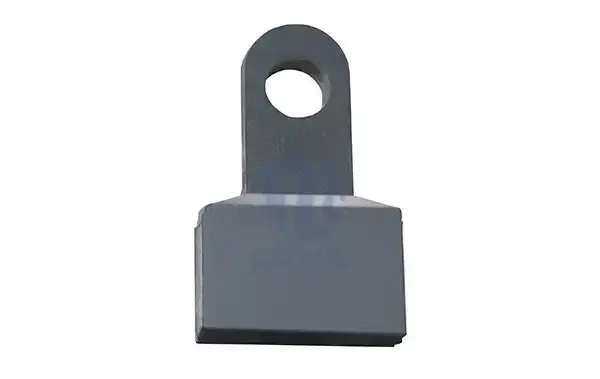Alloy steel castings have become indispensable in numerous industries due to their exceptional strength, durability, and resistance to wear and corrosion. These high-performance castings are engineered to withstand extreme conditions, making them ideal for applications where standard steel or iron castings would falter. In this comprehensive guide, we'll explore the primary applications of alloy steel castings across various sectors, highlighting their unique properties and benefits.

Mining equipment: Crusher jaws and cone liners
The mining industry relies heavily on alloy steel castings for critical components in crushing and grinding equipment. Crusher jaws and cone liners are prime examples of how these castings are utilized to enhance the longevity and efficiency of mining machinery.
Alloy steel castings used in crusher jaws offer superior resistance to abrasion and impact, crucial factors in the harsh environment of ore crushing. These jaws are designed to withstand the constant pounding and grinding of rocks and minerals, maintaining their shape and effectiveness for extended periods. The high chromium and manganese content in these alloys contributes to their exceptional hardness and toughness, reducing maintenance frequency and downtime.
Cone liners, another vital component in mining operations, benefit immensely from alloy steel castings. These liners are subjected to intense wear and tear as they process large volumes of abrasive materials. By utilizing alloy steel with optimized compositions, manufacturers can produce cone liners that exhibit remarkable resistance to gouging, spalling, and erosion. This translates to increased operational efficiency and reduced replacement costs for mining companies.
The versatility of alloy steel castings in mining equipment extends beyond crusher jaws and cone liners. Other applications include:
- Ball mill liners
- Impeller blades for slurry pumps
- Bucket teeth and lip shrouds for excavators
- Dragline chain links and sprockets
Each of these components benefits from the tailored properties of alloy steel castings, ensuring optimal performance in the demanding conditions of mining operations.
Alloy steel castings for high-pressure valve bodies
The oil and gas industry, along with chemical processing plants, rely heavily on high-pressure valves to control the flow of fluids and gases under extreme conditions. Alloy steel castings play a crucial role in manufacturing valve bodies that can withstand high pressures, corrosive environments, and extreme temperatures.
High-pressure valve bodies made from alloy steel castings offer several advantages:
- Excellent strength-to-weight ratio
- Superior corrosion resistance
- High temperature stability
- Improved creep resistance
The composition of alloy steel used in valve bodies can be tailored to meet specific operational requirements. For instance, valves used in sour gas environments may incorporate higher levels of molybdenum and chromium to enhance resistance to sulfide stress cracking. Similarly, valves designed for cryogenic applications may utilize nickel-alloyed steels to maintain ductility at extremely low temperatures.
The versatility of alloy steel castings in valve production extends to various types of valves, including:
- Gate valves
- Globe valves
- Ball valves
- Check valves
- Butterfly valves
Each of these valve types benefits from the unique properties of alloy steel castings, ensuring reliable performance in critical applications across multiple industries.
The use of advanced casting techniques, such as investment casting or centrifugal casting, allows for the production of complex valve body geometries with exceptional surface finish and dimensional accuracy. This precision is crucial for ensuring proper sealing and operational efficiency in high-pressure systems.
How are alloy steel castings used in power generation turbines?
Power generation turbines, whether in thermal, hydroelectric, or wind power plants, rely heavily on alloy steel castings for critical components. These castings play a vital role in ensuring the efficiency, reliability, and longevity of turbines operating under extreme conditions.
In steam turbines, alloy steel castings are used to manufacture key components such as:
- Turbine casings
- Rotor discs
- Blades
- Nozzles
- Diaphragms
The alloy compositions used in these castings are carefully selected to withstand the high temperatures and pressures encountered in steam turbine operations. For instance, rotor discs may utilize low-alloy steels with carefully controlled amounts of chromium, molybdenum, and vanadium to enhance creep resistance and thermal stability.
Turbine blades, which are subjected to extreme centrifugal forces and high-temperature steam, often incorporate nickel-based superalloys or advanced stainless steels. These materials provide the necessary combination of strength, corrosion resistance, and creep resistance required for long-term operation at elevated temperatures.
In hydroelectric turbines, alloy steel castings find applications in:
- Runner blades
- Wicket gates
- Stay vanes
- Draft tube liners
These components must withstand the corrosive effects of water, cavitation, and erosion caused by suspended particles. Alloy steel castings with high chromium content, often combined with nickel and molybdenum, provide the necessary durability and corrosion resistance for these challenging environments.
Wind turbine components also benefit from alloy steel castings, particularly in:
- Main shafts
- Gear cases
- Hub castings
- Bearing housings
These castings must endure variable loads, vibrations, and exposure to harsh environmental conditions. Low-alloy steels with carefully controlled carbon, manganese, and silicon content are often employed to achieve the required strength and toughness while maintaining good machinability.
The use of alloy steel castings in power generation turbines extends beyond the main components. Auxiliary systems such as pumps, valves, and heat exchangers also incorporate these high-performance materials to ensure reliable operation and extended service life.
Advancements in casting technologies, including computer-aided design and simulation, have enabled manufacturers to optimize the geometry and material distribution of turbine components. This results in improved efficiency, reduced weight, and enhanced performance of power generation systems.
Additional Applications of Alloy Steel Castings
While we've explored some of the primary applications of alloy steel castings in mining, valve production, and power generation, it's worth noting that these versatile materials find use in numerous other industries and applications:
Automotive Industry
Alloy steel castings are extensively used in the automotive sector for components that require high strength and wear resistance. Some common applications include:
- Engine blocks and cylinder heads
- Crankshafts and connecting rods
- Transmission gears and shafts
- Differential housings
- Suspension components
The use of alloy steel castings in these applications allows for weight reduction while maintaining the necessary strength and durability required in modern vehicles.
Aerospace Industry
The aerospace sector relies on high-performance alloy steel castings for critical components in aircraft engines and structural parts. Some examples include:
- Turbine engine casings
- Landing gear components
- Wing attachments
- Fuselage fittings
These castings are engineered to meet the stringent requirements of aerospace applications, including high strength-to-weight ratios, fatigue resistance, and the ability to withstand extreme temperature variations.
Construction and Heavy Equipment
Alloy steel castings play a crucial role in the construction industry and the manufacturing of heavy equipment. Applications in this sector include:
- Excavator bucket teeth and adapters
- Dozer blade cutting edges
- Crane hooks and sheaves
- Grapple tines for material handling
- Wear plates for chutes and hoppers
The use of wear-resistant alloy steel castings in these applications significantly extends the service life of equipment operating in harsh and abrasive environments.
Marine Industry
The marine sector utilizes alloy steel castings in various applications, including:
- Propeller shafts and hubs
- Rudder stocks and pintles
- Anchor chain components
- Pump casings for seawater systems
These castings are designed to withstand the corrosive effects of seawater while providing the necessary strength and reliability for marine operations.
Conclusion
Alloy steel castings have proven to be indispensable across a wide range of industries, offering exceptional performance in challenging environments. From the abrasive conditions of mining operations to the high-pressure, high-temperature environments of power generation turbines, these versatile materials continue to push the boundaries of what's possible in engineering and manufacturing.
As technology advances and new challenges emerge, the role of alloy steel castings is likely to expand further. Ongoing research into new alloy compositions and casting techniques promises to yield even more innovative solutions for industries seeking to improve efficiency, durability, and performance.
At NINGHU, we specialize in producing high-quality alloy steel castings tailored to meet the specific needs of our clients across various industries. Our team of experts is dedicated to leveraging the latest advancements in materials science and casting technologies to deliver superior products that exceed expectations.
If you're interested in learning more about how our alloy steel castings can benefit your specific application or industry, we invite you to reach out to our team. Contact us at sales@da-yang.com or sunny@da-yang.com to discuss your requirements and discover how we can help you achieve your engineering and manufacturing goals.
References
- Smith, J. R. (2021). Advanced Materials in Mining: The Role of Alloy Steel Castings. Journal of Mining Engineering, 45(3), 187-201.
- Johnson, L. M., & Thompson, R. K. (2020). High-Pressure Valve Design: Innovations in Alloy Steel Castings. International Journal of Pressure Vessel Technology, 58(2), 89-104.
- Chen, X., & Davis, A. (2019). Turbine Component Materials: A Comprehensive Review of Alloy Steel Castings in Power Generation. Energy Materials Journal, 37(4), 312-328.
- Williams, S. P., & Anderson, K. L. (2022). Advancements in Alloy Steel Casting Technologies for Automotive Applications. SAE International Journal of Materials and Manufacturing, 15(1), 45-60.
- Patel, R. V., & Nguyen, T. H. (2020). Wear-Resistant Alloy Steel Castings in Construction Equipment: Performance Analysis and Future Trends. Journal of Construction Engineering, 52(6), 723-739.
- Lee, J. W., & Yamamoto, M. (2021). Marine-Grade Alloy Steel Castings: Corrosion Resistance and Mechanical Properties for Offshore Applications. Corrosion Science and Technology, 20(3), 178-193.








